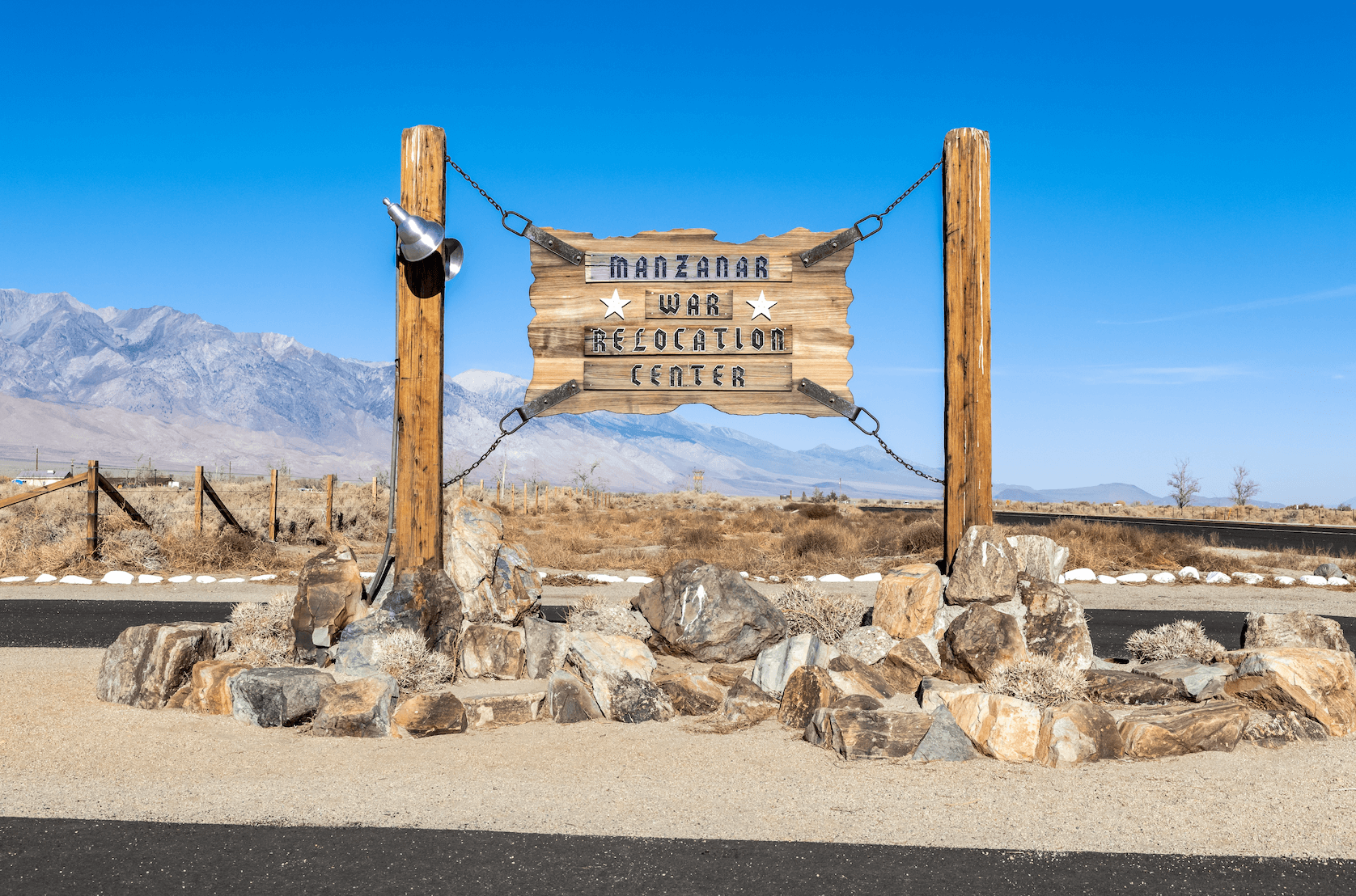My grandparents, Isao and Masako Sugimura, along with two young children, were incarcerated at Manzanar as family number 5112. No one in our community spoke much about “camp,” so I did not explore the subject until I attended university. Now as a minister of the gospel, I have begun to collect these stories as viewed through the lens of the Christian faith.
The first time I remember learning about Japanese American internment was hearing my Obachan speak bitterly about what this country had done to her family. The war years and the ensuing aftermath had dramatically altered her dreams for life.
The Japanese American internment period has left a dark stain on our country. It isn’t talked about regularly, and yet there are many stories that need to be heard, especially for Christians.
The author of Hebrews reminded first-century Christians that the church is “surrounded by so great a cloud of witnesses” (Hebrews 12:1). Saints of old from Abel to Abraham, and Rahab to David motivate us to persevere in faith (11:1-40). In like manner, successive generations have looked “to Jesus, the founder and perfecter of our faith, who for the joy that was set before him endured the cross, despising the shame, and is seated at the right hand of the throne of God” (12:2).
Many Nikkei (Japanese Americans) have since gone on to glory, yet their faith—which persevered in these camps—still exhorts believers today. Those saints are more than names on a camp roster or faces in faded photographs. They are fellow believers we shall one day meet in heaven to hear their stories face-to-face.
Sojourners and Exiles
Eighty years ago, on December 7, 1941, Imperial Japan bombed Pearl Harbor to awaken America, “the sleeping giant.” Many Nikkei were attending church or just returning from worship services when they heard the news.
Rev. Taro Goto immediately responded in prayer: “My wife and I glued our ears to a small radio set. War! We went into the sanctuary, only a few steps from the parsonage. Kneeling at the rail, we prayed, ‘God, help us to be good Christians and let us serve Thee well throughout this conflict’” (Lester Suzuki, Ministry in the Assembly and Relocation Centers of World War II).
Within days following the attack, the FBI rounded up over 1,000 “persons of suspicion” such as Buddhist priests and Japanese-language teachers. The Nikkei, two-thirds of whom were American citizens, faced illegal restrictions such as the freezing of their bank accounts, confiscation of “contraband” like shortwave radios, hunting rifles, and cameras. A curfew forbade them from traveling more than five miles beyond their homes or staying out past 8pm. Churches became essential not just for followers of Christ, but for the entire Nikkei community.
The Church’s Response
The Japanese American church, numbering about 100 congregations, sought to maintain calm amidst the storm. On the morning after Pearl Harbor, Rev. Daisuke Kitagawa offered his services as an interpreter between government authorities and those who were arrested.
He recalls that trying time, “The whole community was thoroughly panic-stricken; every male lived in anticipation of arrest by the FBI, and every household endured each day in fear and trembling. Most Japanese, including at least one clergyman, were so afraid of being marked by association with those who had been taken away that they hesitated to visit the wives and children of the victims. . . . No rational explanation could set their minds at ease” (Daisuke Kitagawa, Issei and Nisei).
The church offered material assistance to those in need as they stood on the promises of Scripture: “The steadfast love of the LORD never ceases; his mercies never come to an end; they are new every morning; great is your faithfulness” (Lamentations 3:22-23).
Yasushi Wada, for example, testified to God’s faithful preservation when his parents were among the first to be arrested: “My brother, sister, and I saw our father standing on the other side of a tall wire fence. We were allowed only three minutes to talk to him. My father assured us that God would watch over all of us and that we should continue to trust in Him. His display of faith and trust in Jesus Christ enabled us to do the same and carried us through the three years of separation until we were again reunited in 1944” (Victor Okada, Triumphs of Faith).
A People Displaced
Ten weeks after the bombing of Pearl Harbor, President Roosevelt signed Executive Order 9066, resulting in the forced relocation and incarceration of all 120,000 Japanese Americans from the Pacific Coast. Government officials initially claimed it was for reasons of public safety, but most now affirm that this discriminatory course of action had been rooted in “race prejudice, war hysteria, and a failure of political leadership” (Commission on Wartime Relocation and Internment of Citizens, Personal Justice Denied).
Milton Eisenhower, who coordinated the internment, would later express his regret:
“The evacuation of Japanese Americans from their homes on the coast to hastily constructed assembly centers and then to inland relocation centers was an inhuman mistake. Thousands of American citizens of Japanese ancestry were stripped of their rights and freedoms and treated almost like enemy prisoners of war. Many lost their homes, their businesses, and their savings. For the 120,000 Japanese the evacuation was a bad dream come to pass. How could such a tragedy have occurred in a democratic society that prides itself on individual rights and freedoms?”
Throughout the spring of 1942, notices posted on telephone poles declared the impending evacuation: “ALL PERSONS OF JAPANESE ANCESTRY, BOTH ALIEN AND NONALIEN, WILL BE EVACUATED FROM THE ABOVE DESIGNATED AREA BY 12:00 O’CLOCK NOON.”
Each family received an identification number and could only bring whatever luggage they could carry. They had to leave behind homes, businesses, farms, churches, communities, and even pets. They would reside for several months in makeshift assembly centers at former racetracks and county fairgrounds until transferred to relocation centers in the country’s interior. The Nikkei church recognized their suffering as unjust, yet they addressed their grief and shame with an unfading hope in Jesus Christ (1 Peter 2:19-25).
The Care of Souls
During the internment, Nikkei believers led many to follow Christ as they cared for hurting souls. Ren Kimura recalled how his pastor was baptizing new converts all the time: “It was at Rohwer, Arkansas, that I experienced the joy of being part of the federated Christian church, where believers of nearly every denomination—liberal and conservative, mainline and independent, high church and informal—worshipped together and were inspired by the dynamic and personable Reverend K. Harper Sakaue, the only English-speaking nisei minister in the entire camp.” On Easter Sunday 1943, eighty-one new church members were baptized.
Nikkei believers responded to injustice by asking questions like, “Who in our community might be more open to the gospel because of the suffering they have endured?” and “How can we show the compassion of Christ to those experiencing grief and loss?”
The church also encouraged one another through the public preaching and the personal ministry of God’s Word (Romans 15:14). Their faith-filled response challenges us to consider how we handle life’s unexpected trials. What sermons would we preach or what hymns would we sing if we had only one Sunday left to gather (Colossians 3:16)? How might we counsel those whose lives are in chaos because of suffering beyond their control? Church history reveals how our strongest-held values emerge out of fiery trials (1 Peter 1:6-7).
In the camps, believers formed interdenominational churches to strengthen one another through worship and fellowship (Hebrews 10:24-25). Today, we rarely find Methodists, Presbyterians, Baptists, and Holiness Christians worshipping together in one federated church (Psalm 133). Sadly, Christians are too often known for what we are against instead of what we share in common (Ephesians 4:1-6). Yet collective suffering can either draw us closer together or drive us further apart.
The Nikkei were also blessed by the sacrificial love of non-Japanese believers who lived out the teachings of Jesus (John 13:34-35). Virginia Swanson assisted over 3,000 Nikkei who were given forty-eight hours to evacuate their Terminal Island homes. Clara Breed ministered through postcards to the children who once frequented her San Diego library. Missionaries like Emery Andrews moved thousands of miles to live near their congregants in the camps. Many others cared for the church behind barbed wires and helped with resettlement after the war.
Today, the majority culture church can reach out to people of different ethnicities, languages, and socio-economic backgrounds within our own communities. We can all show the generous love of Christ to those often deemed outcasts by society like the homeless, the poor, the widowed, and the orphaned (James 1:27). We can speak up for those who may be unable to defend themselves like immigrants and refugees or the abandoned and abused (Proverbs 31:8-9).
Caring for souls involves “helping acts, done by representative Christian persons, directed toward the healing, sustaining, guiding, and reconciling of troubled persons whose troubles arise in the context of ultimate meanings and concerns” (William Clebsch and Charles Jaekle, Pastoral Care in Historical Perspective).
On this eightieth anniversary of the attack on Pearl Harbor, let us remember God’s historic faithfulness to his church and remind each other of our call to care for souls in troubled times (1 John 3:16-18).

